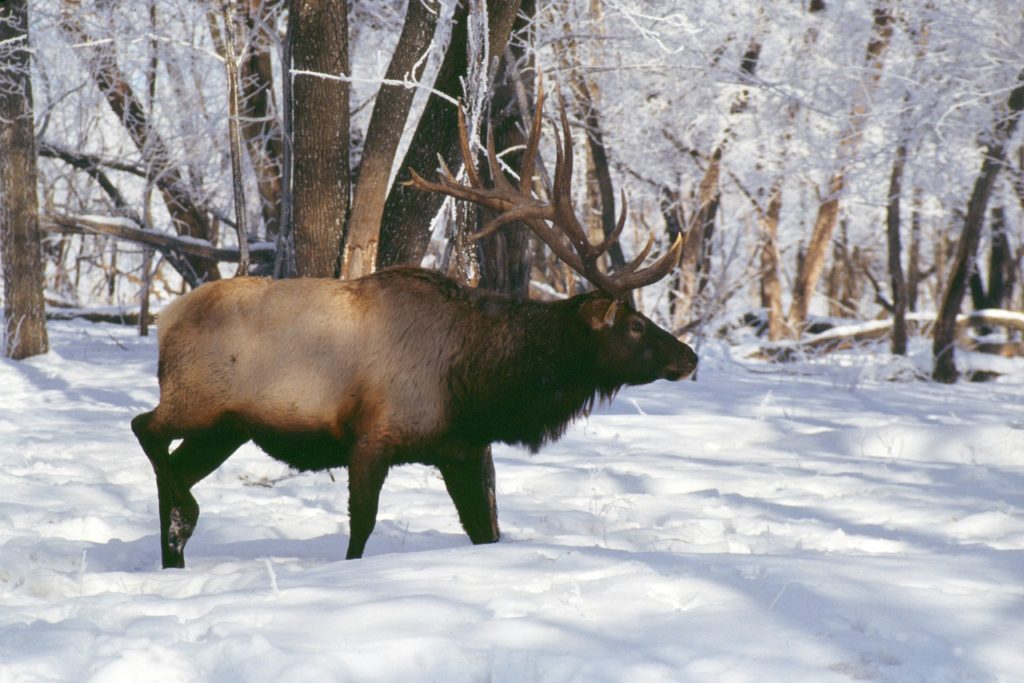

Glancing out the window in the waning hours of light, a blur of movement caught my eye. And there she was , standing in the new fallen snow. The female Rocky Mountain Elk stood next to the lodgepole pine, pausing for just a moment before she dashed off into the woods, the white of her rear standing out in the dusk hour.
Savoring this moment, and about to step away, another one came into view. As I stood at the window, yet another came leaping into view, bouncing off her back hooves as she followed. Over the next five minutes, the entire herd passed through numbering 17 in total. Their grace, their size, their ability to move with stealth as darkness descended, filled me with awe. Once again I am reminded that I am living in wilderness, privileged to share it with these large graceful animals.
When we first moved to Nederland, I don’t remember ever seeing elk in our neighborhood. Elk prefer large, grassy meadows where their large herds can congregate and nibble on tender grasses and shrubs. The first elk I remember seeing were several miles from here south of Boulder Canyon off Magnolia Road. We were driving up the scenic road from Boulder Canyon and saw their distant shapes off in a meadow numbering more than forty of them.
But during the last two years, much like the moose, we are now seeing them more frequently. In the case of our neighborhood, I think it has to do with a rather catastrophic event from the summer of 2016 — the Cold Springs Wildfire. The fire swept over Ridge Road, burning out many acres of lodgepole pine forest, leaving just scorched trees and earth. In the winter following, I started seeing large herds of female elk grazing in that area. It’s no wonder, because soon after the fire was put out, the area filled with wildflowers, new aspen trees and grasses — perfect elk food.
Rocky Mountain elk are similar to other ungulates (hoofed mammals), where females hang together most of the year with their calves, and males travel in smaller groups or even solo. The mothers actually care for all the young as a group — where one female will act as nanny for a group of young elk, while the mother strays further to find food. The females will need an ample amount of food during winter, as mating occurs in September and October, so at this time of year, they are about halfway through gestation carrying their young. In late May and June, they will give birth to one or two new elk.
Rocky Mountain elk are easily distinguished from the resident moose and mule deer even during nighttime. They have a very large patch of white fur that covers their behind, and in terms of size stand much taller than the mule deer and can weigh up to 800 pounds (males). Unlike the moose, their coat is a lighter brown, and their noses are pointed, not bull-nosed like the moose.
Though they appear gentle in nature, the female elk are quite protective of their young. Weighing several hundred pounds, they will use their size as well as their hooves to defend them. So while it’s exciting to see them, like any wild animal, it’s best to observe from a distance and enjoy the show.


Very cool that you had such a large herd right out your back door! I think you are right about the fire changing their habitat. I’ve noticed a big difference in the birds we see since the fire.